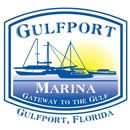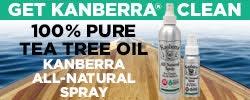| December has a way of slowing us down just enough to take stock of where we’ve been and where we’re headed. As the year draws to a close, I find myself reflecting on a pivotal moment in Outer Banks history and the spirit of possibility that inspires our work every day. On December 17, 1903, on the windy, wide sands of Kill Devil Hills, Wilbur and Orville Wright achieved what many believed impossible: the first sustained, powered flight of a heavier-than-air aircraft. Four short flights that morning changed the course of human history, and they happened right here! My favorite part of visiting Wright Brothers National Memorial is simple — walking the Flight Line, which traces the path of the Wrights’ first four powered flights. Each time I step onto that long, straight path I slow my pace and imagine the scene as it must have been more than a century ago. It looked much different than it does today. But how it feels is the same. The cold wind coming off the Atlantic. The wind-blown sand stinging your eyes. The mixture of doubt and determination. No certainty of success. Just two brothers, a handful of locals, a “flying machine,” and a belief that progress was possible if they were willing to try, fail, adjust, and try again. A quiet walk along the Flight Line always reminds me why Outer Banks Forever exists. Our mission is rooted in protecting the places where history was made and in ensuring those places continue to inspire future generations. The stories held within the landscapes, structures, and shorelines of the Outer Banks are not relics of the past but are reminders of human ingenuity, resilience, and stewardship. They show us who we are and invite us to imagine who we might become. Our Outer Banks national parks allow us to experience history in tangible, meaningful ways. This year, because of supporters like you, we have continued vital work across our Outer Banks national parks. From safeguarding and restoring historic structures to enhancing visitor experiences and protecting fragile coastal resources, your generosity has translated into real impact. Every project we support carries forward the same spirit that carried the Wright brothers into the air — a belief that progress happens when people come together around a shared vision. None of this work happens by accident. Just as the first flight required preparation, persistence, and partnership, preserving these extraordinary places requires commitment from people who care deeply about the Outer Banks and its legacy. Your support allows us not only to address urgent park needs today, but also to plan for tomorrow so that stories of innovation, courage, and conservation remain accessible to all. As we look ahead to the new year, I am filled with optimism. We have important projects on the horizon and ambitious goals that will strengthen our parks and enrich the experiences of millions of park visitors. Like the Wright brothers, we are guided by a clear sense of purpose and by the understanding that the future is built one thoughtful step at a time. When you consider your year-end giving, I hope you’ll think of that long Flight Line stretching across the sandy soil. What began there as an experiment sparked a global transformation. In much the same way, your support has the power to create lasting impact for the places that are integral to the Outer Banks. Thank you for believing in our work, investing in preservation and possibility, and walking alongside us as we carry these incredible stories forward. Together, we ensure that the winds of inspiration continue to lift generations to come. And as they say in one of my favorite movies of all time: “Let’s kick the tires and light the fires!” (Top Gun, 1986) | 

























































Be the first to comment!